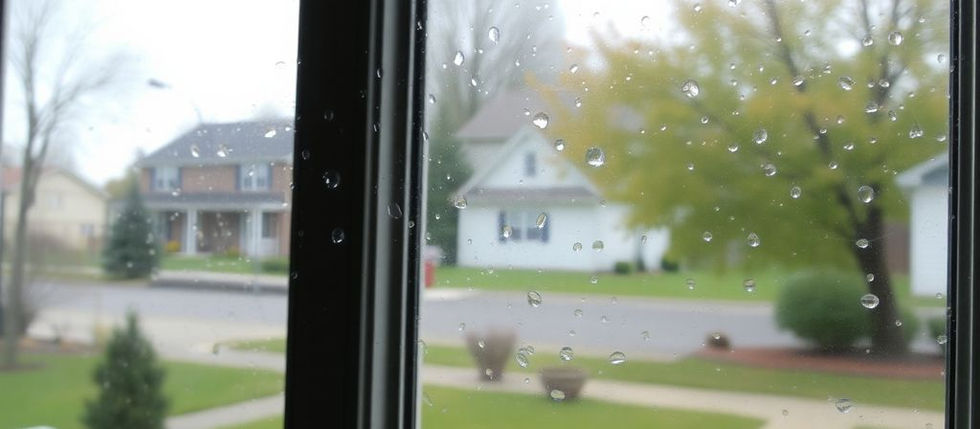Keeping your roof in top shape is crucial for protecting your home and ensuring its longevity. In New Britain, homeowners have various options for roof remodeling that can provide quick and effective solutions. This article covers everything you need to know about roof maintenance, choosing the right materials, installation steps, repair techniques, innovative solutions, and more.
Key Takeaways
Regular roof maintenance can prevent costly repairs in the future.
Choosing the right roofing material can impact the lifespan and efficiency of your roof.
Proper preparation and understanding the installation process can lead to a smoother roof installation experience.
Innovative solutions like drone inspections and energy-efficient systems can enhance your roofing project.
Knowing when to repair or replace your roof can save you money and protect your home.
Understanding the Importance of Roof Maintenance
Common Issues with Neglected Roofs
Neglecting your roof can lead to a variety of problems. Leaks are one of the most common issues, which can cause water damage inside your home. Missing or damaged shingles can also expose your roof to the elements, leading to further deterioration. Mold and mildew can grow in damp areas, posing health risks to your family. Regular maintenance helps prevent these issues and keeps your roof in good condition.
Benefits of Regular Inspections
Having your roof inspected at least once a year is crucial. A professional inspection can identify small problems before they become major issues. This not only saves you money on costly repairs but also extends the life of your roof. Regular inspections can also help you maintain your home’s value and ensure that your roof is always in top shape.
How to Schedule Maintenance
Scheduling roof maintenance is simple. Most roofing companies offer annual inspection services. You can contact a local roofing contractor to set up an appointment. It's best to schedule inspections in the spring and fall to prepare for extreme weather conditions. Remember, keeping up with regular maintenance is key to a long-lasting roof.
Choosing the Right Roofing Material
Comparing Asphalt, Metal, and Tile
When it comes to roofing, there are several materials to choose from. Asphalt shingles are the most common due to their affordability and ease of installation. Metal roofs, on the other hand, offer durability and can last up to 70 years. Tile roofs are known for their aesthetic appeal and longevity but come with a higher price tag.
Eco-Friendly Roofing Options
For those looking to reduce their environmental footprint, eco-friendly roofing options are available. Green roofs, which are covered with vegetation, help in reducing heat and improving air quality. Solar roofs, equipped with solar panels, generate electricity and can significantly cut down on energy bills.
Cost vs. Longevity
When choosing a roofing material, it's essential to balance cost and longevity. While asphalt shingles are cheaper upfront, they may need to be replaced more frequently. Metal and tile roofs, though more expensive initially, offer longer lifespans and can be more cost-effective in the long run. Getting a new roof is a big investment, so consider both the immediate and future costs.
Steps to a Successful Roof Installation
Preparing Your Home for Installation
Proper preparation is key to ensuring a smooth and successful roof replacement process. By taking the necessary steps to prepare your home and communicate effectively with the roofing contractor, you can minimize disruptions and ensure the safety of your property.
Remove valuables and fragile items from the areas directly below the roof. This prevents potential damage due to vibrations or falling debris during the installation process.
Cover or relocate any outdoor furniture, potted plants, or delicate landscaping elements near the house. This protects them from potential damage caused by falling debris or equipment movement during the roof replacement.
Clear the driveway and ensure there is ample space for roofing contractors to park their vehicles and maneuver equipment. Provide clear access to the work area, removing any obstacles that may hinder the progress of the project.
What to Expect During the Process
A roof installation involves several stages, each crucial for a successful outcome. Here's a step-by-step guide to your roof installation:
Remove your existing roof: The old roofing materials are taken off to make way for the new installation.
Remove old sheathing: Any damaged or worn-out sheathing is removed to ensure a solid base for the new roof.
Lay the underlayment: A protective layer is laid down to shield your home from moisture.
Seal & install vents: Proper sealing and vent installation are crucial for ventilation and moisture control.
Install new roofing materials: The final step involves placing the new roofing materials, ensuring they are securely fastened and properly aligned.
Post-Installation Care Tips
Taking care of your new roof after installation is essential for its longevity and performance. Here are some tips:
Inspect your roof regularly: Look for any signs of damage or wear and tear, especially after severe weather.
Clean gutters and downspouts: Ensure that water can flow freely off your roof to prevent water damage.
Trim overhanging branches: This prevents debris from accumulating on your roof and reduces the risk of damage from falling branches.
Effective Roof Repair Techniques
Identifying Roof Damage
Identifying roof damage early can save you from costly repairs down the line. Look for missing shingles, water stains on your ceiling, or any visible wear and tear. Regular inspections can help catch these issues before they become major problems.
DIY vs. Professional Repairs
When it comes to roof repairs, you might wonder if you can handle it yourself or if you need a professional. Minor fixes like replacing a few shingles can be a DIY project if you have the right tools and safety measures. However, for more extensive damage, it's best to hire a professional to ensure the job is done correctly and safely.
Preventative Measures to Avoid Future Damage
Taking steps to prevent damage can extend the life of your roof. Here are some tips:
Keep gutters clean to prevent water buildup.
Trim overhanging branches to avoid damage from falling limbs.
Schedule regular inspections to catch issues early.
Innovative Roofing Solutions
Drone Inspections for Accurate Assessments
Using drones for roof inspections is a game-changer. These devices can quickly and safely assess the condition of your roof, capturing detailed images and videos. This method is not only efficient but also reduces the risk of accidents. Drone inspections provide a comprehensive view, making it easier to identify issues that might be missed during a traditional inspection.
Energy-Efficient Roofing Systems
Energy-efficient roofing systems are designed to reduce your home's energy consumption. These roofs reflect more sunlight and absorb less heat, keeping your home cooler in the summer. This can lead to significant savings on your energy bills. Options include cool roofs, green roofs, and solar shingles. Investing in an energy-efficient roof is a smart choice for both your wallet and the environment.
Incorporating Skylights for Natural Light
Adding skylights to your roof can transform your living space by bringing in natural light. Skylights can make rooms feel larger and more inviting. They also help reduce the need for artificial lighting during the day, which can lower your energy costs. When installing skylights, it's important to choose the right type and placement to maximize their benefits and avoid potential issues like leaks.
Navigating Roof Replacement
Signs It's Time for a Replacement
Knowing when to replace your roof is crucial. Look for signs like leaks, missing shingles, or sagging areas. If your roof is over 20 years old, it might be time for a replacement. Regular inspections can help you catch these issues early.
Choosing a Reliable Contractor
Selecting the right contractor is essential. Look for experienced professionals with good reviews. Ask for references and check their previous work. A reliable contractor will provide a detailed estimate and timeline for the project.
Financing Your Roof Replacement
Roof replacements can be costly. Explore different financing options like home equity loans, personal loans, or financing plans offered by contractors. Some companies may offer payment plans to make the process more affordable.
Enhancing Your Roof's Longevity
Seasonal Roof Care Tips
Taking care of your roof each season is key to making it last longer. Regular maintenance can prevent small issues from becoming big problems. In the fall, clear leaves and debris from gutters to avoid clogs. During winter, check for ice dams that can cause leaks. Spring is a good time to inspect for any damage from winter storms. Summer is perfect for checking for any wear and tear from the sun.
Importance of Proper Ventilation
Proper ventilation is crucial for your roof's health. It helps regulate temperature and moisture levels in your attic. Without good ventilation, heat and moisture can build up, leading to mold and rot. Make sure your attic has enough vents to allow air to flow freely. This simple step can add years to your roof's life.
Impact of Weather on Roof Durability
Weather plays a big role in how long your roof lasts. Harsh weather conditions like heavy rain, snow, and high winds can wear down your roof over time. Choosing the right roofing material for your climate is important. For example, metal roofs are great for areas with heavy snowfall, while asphalt shingles work well in milder climates. Regular inspections can help you catch and fix weather-related damage early.
Conclusion
In conclusion, taking care of your roof is one of the best things you can do for your home. Whether you need a simple repair, a full replacement, or just want to add some skylights, there are many options available in New Britain. With the right professionals, you can make sure your roof stays strong and looks great for years to come. Don't wait until it's too late—start your roof remodel today and enjoy the peace of mind that comes with a job well done.
Frequently Asked Questions
What are the signs I need a new roof?
Look for missing or broken shingles, leaks, granules in the gutters, or if your roof is really old. These signs mean you might need a new roof.
How long does it take to replace a roof?
Usually, it takes a few days to about a week to replace a roof. The time depends on how big your roof is and the weather.
Can I finance my roof repair or replacement?
Yes, many places offer financing options, including plans with no interest. This helps you fit the repair or replacement into your budget.
What should I do to prepare my home for a roof installation?
Move your cars away from the house and cover your belongings in the attic. Make sure pets and kids are safe and out of the work area.
Should I repair my roof or replace it?
If the damage is small, a repair might be enough. But if there's a lot of damage or your roof is old, replacing it could be the better choice.
How often should I have my roof inspected?
It's a good idea to have your roof checked at least once a year and after big storms. Regular inspections can catch problems early and save you money.















Comentarios